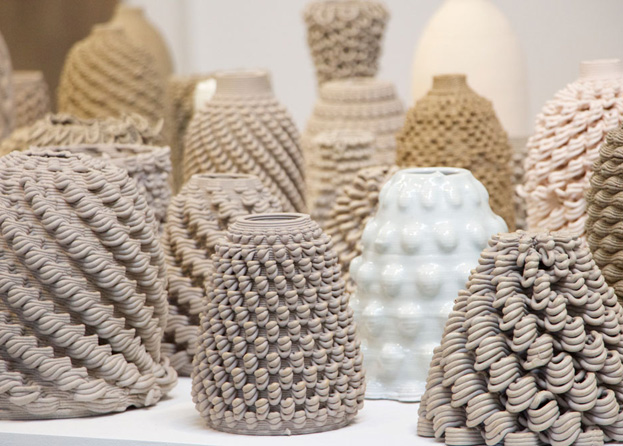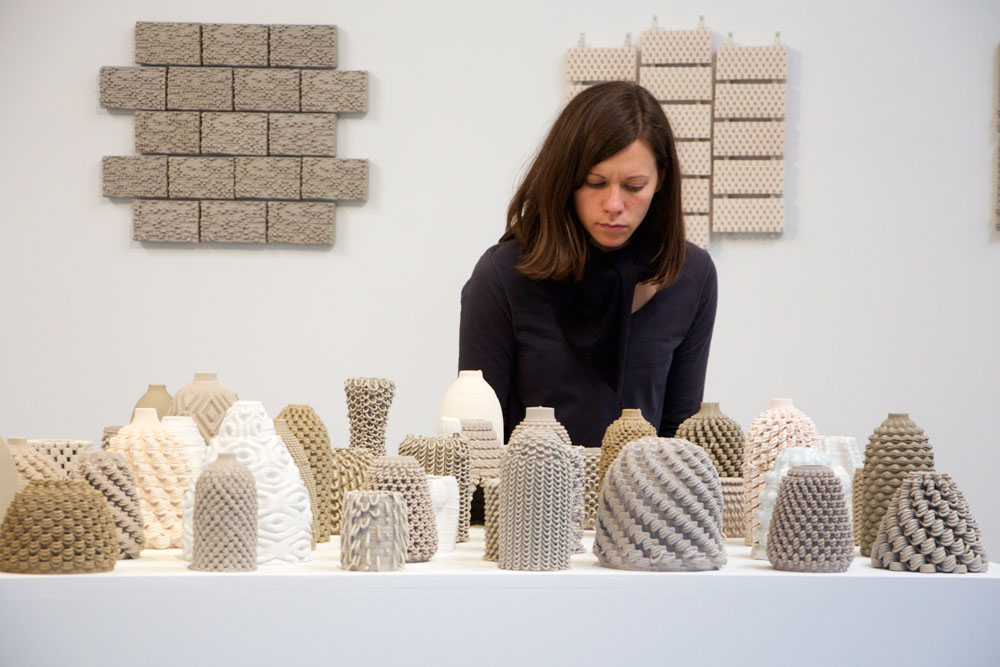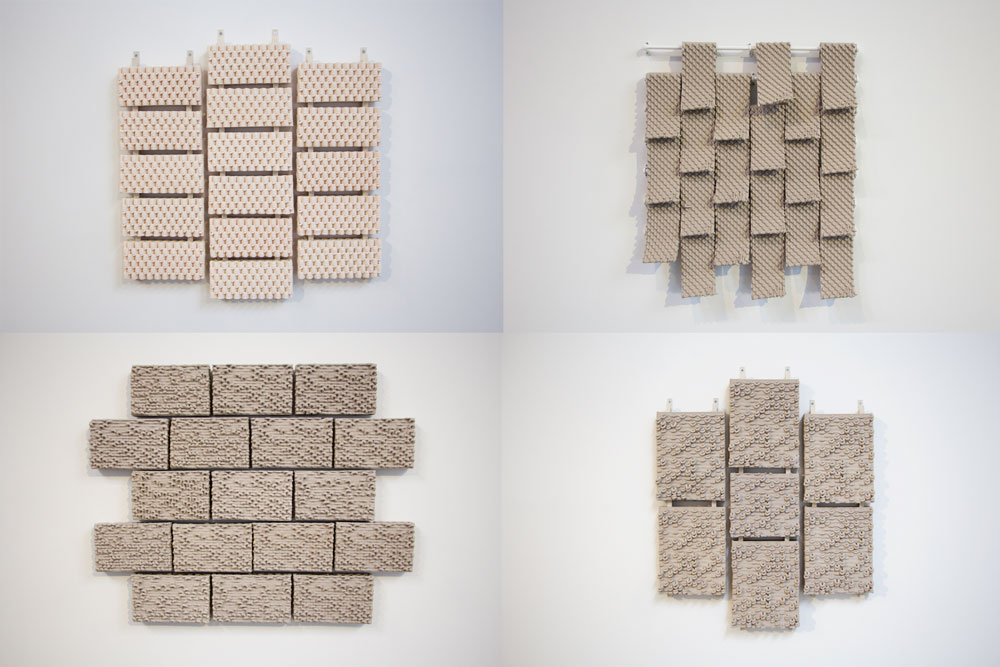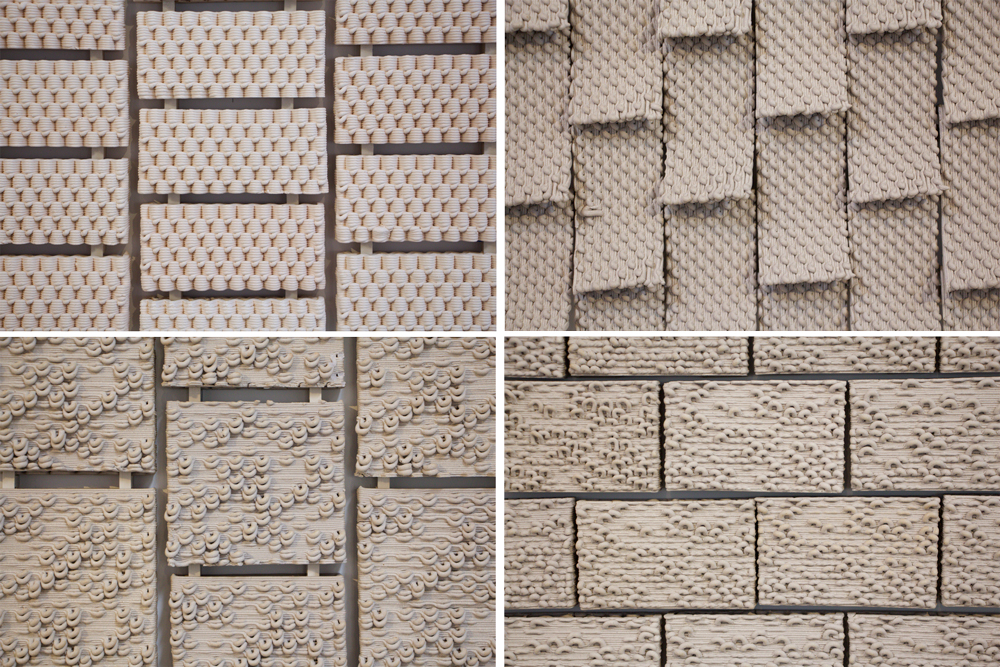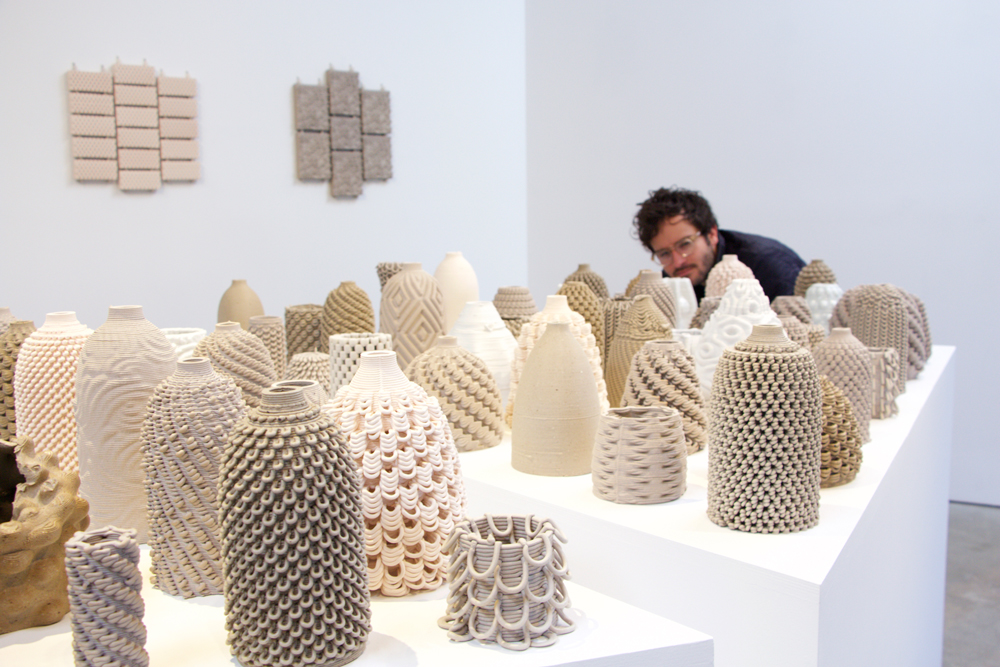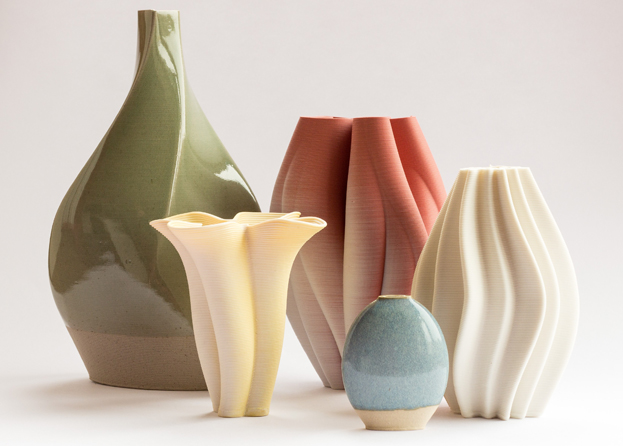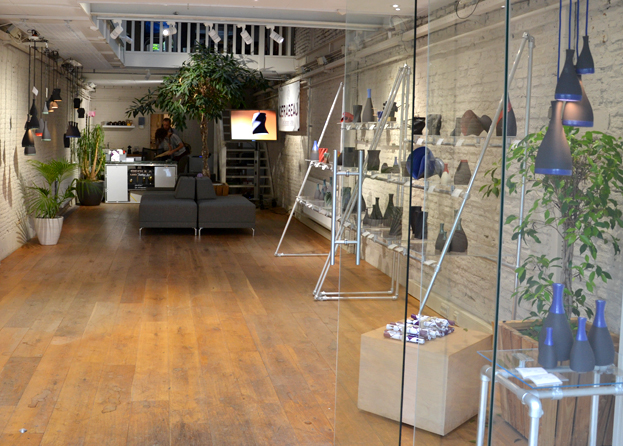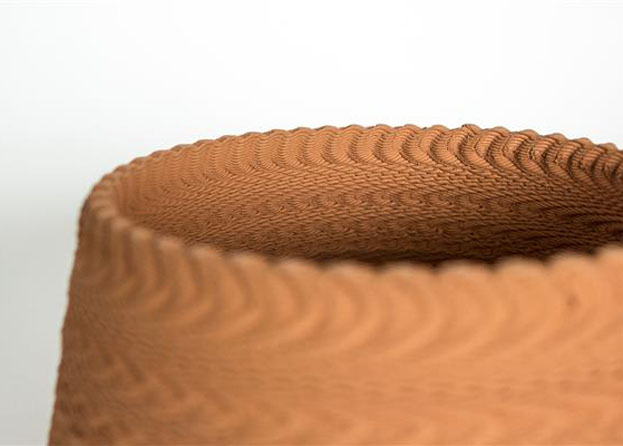GCODE.Clay is a series of objects 3D printed in various clays (porcelain, bmix, terra-cotta, and recycled clay) that explore the creative potential of designing with G-code, the language in which people tell computerized machine tools how to make something. In this case the 3D printer is pushed outside the boundaries of what would typically define the printed object, creating a series of controlled errors that create a new expressions in clay defined by the plasticity of the material, gravity and machine behavior.
Typically, 3D printed ceramic objects are defined by the layers of clay whose striations are present on the surface of a 3D printed object. In this case, the surface quality takes on the appearance of textiles, with clay being woven, threaded, curled, as it droops away from the surface.
GCODE.Clay was first exhibited at Space 2214 in its inaugural exhibition investigating Pattern, Predictability, and Repetition , which explored the themes of repetition, and rote action—a defining peril of modernity. In this project, the unpredictability is the fundamental aspiration of the object making. Patterns emerge and disappear in the variations of the experiments explored.
In addition to vessels, a series of experiments in ceramic wall cladding assemblies were explored as well. Each assembly is hung using custom 3D printed hardware, and serve as prototypes for ceramic cladding systems for building.
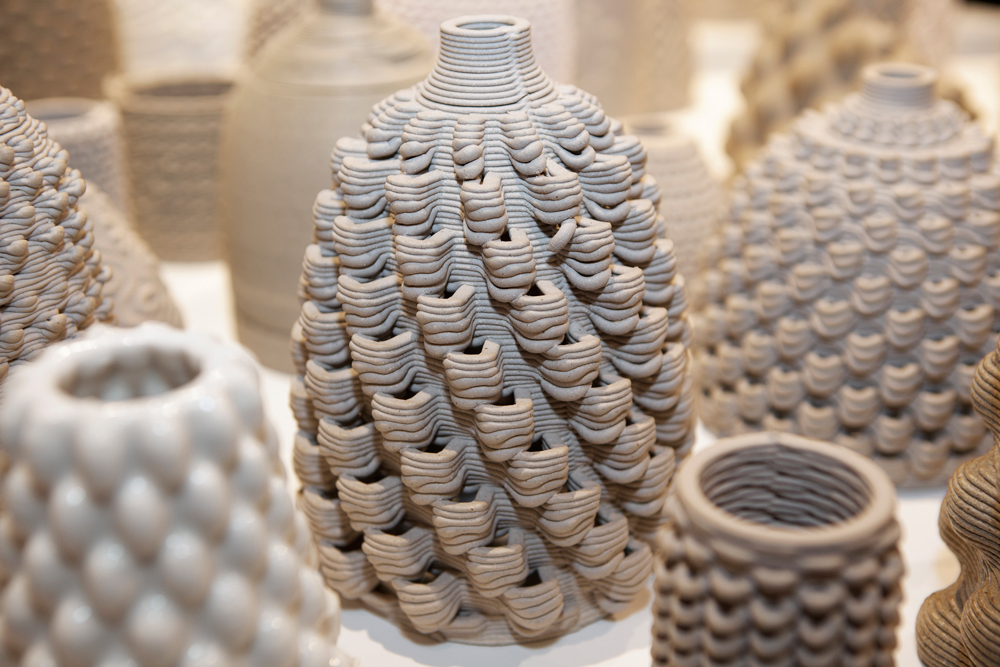
In each object, texture, pattern, and surface make the objects tactile, and gather light and shadow in beautiful ways. Architecture, lighting, and pottery all come to mind when considering the objects through several scales. Ceramic becomes soft to the eye, dynamic, with detail that could not be achieved by hand — yet the hand of the digital designer is present in every artifact.
GCODE.Clay from Rael San Fratello on Vimeo.
Project Team: Ronald Rael, Virginia San Fratello, Kent Wilson, Alex Schofield
Acknowledgments: Special thanks to Nathan John, Clarke Selman, Douglas Burnham, envelopeA+D, Danny Defe at Deltabots, Eyal Nir at Autodesk, and especially to the incomparable Ehren Tool in the Department of Art Practice at UC Berkeley.

